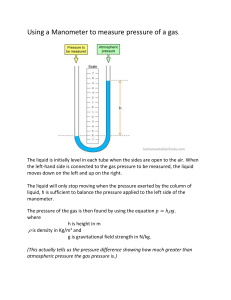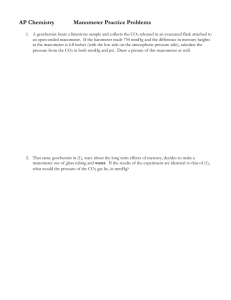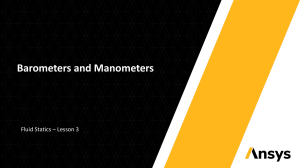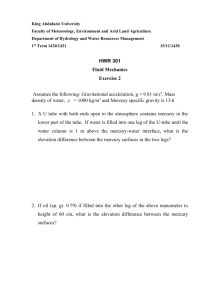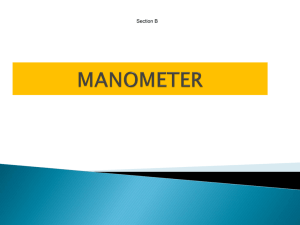DEPARTMENT OF CIVIL AND ENVIRONMENTAL ENGINEERING MASSACHUSETTS INSTITUTE OF TECHNOLOGY
advertisement
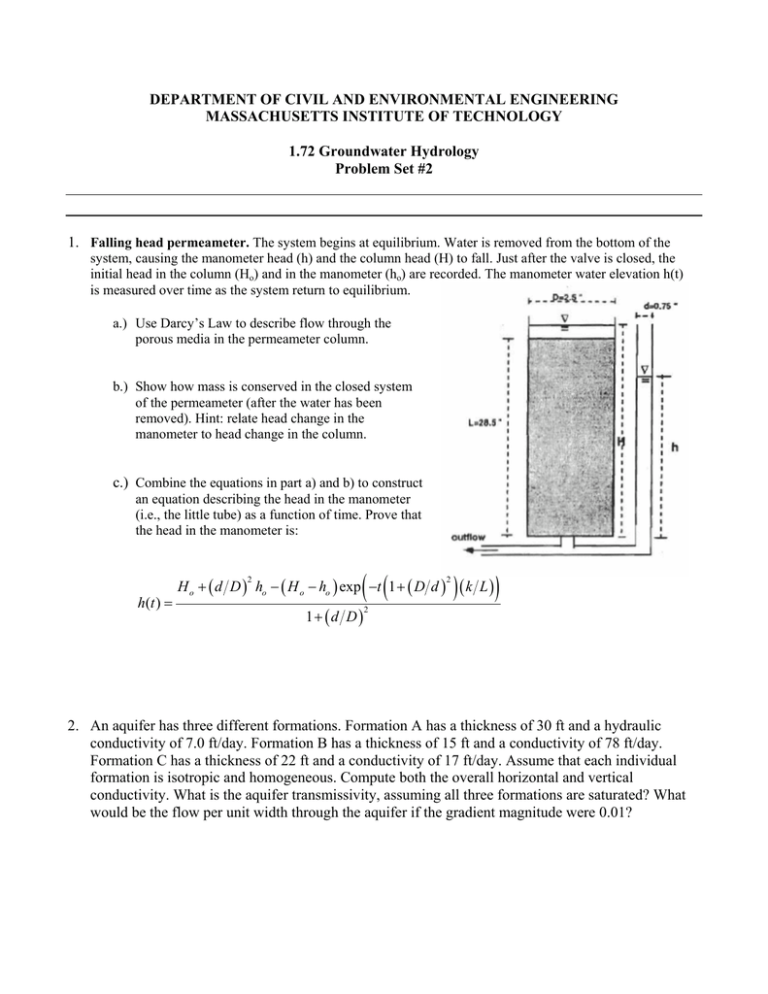
DEPARTMENT OF CIVIL AND ENVIRONMENTAL ENGINEERING MASSACHUSETTS INSTITUTE OF TECHNOLOGY 1.72 Groundwater Hydrology Problem Set #2 1. Falling head permeameter. The system begins at equilibrium. Water is removed from the bottom of the system, causing the manometer head (h) and the column head (H) to fall. Just after the valve is closed, the initial head in the column (Ho) and in the manometer (ho) are recorded. The manometer water elevation h(t) is measured over time as the system return to equilibrium. a.) Use Darcy’s Law to describe flow through the porous media in the permeameter column. b.) Show how mass is conserved in the closed system of the permeameter (after the water has been removed). Hint: relate head change in the manometer to head change in the column. c.) Combine the equations in part a) and b) to construct an equation describing the head in the manometer (i.e., the little tube) as a function of time. Prove that the head in the manometer is: 2 h(t ) = ( ( H o + ( d D ) ho − ( H o − ho ) exp −t 1 + ( D d ) 1+ (d D) 2 ) ( k L )) 2 2. An aquifer has three different formations. Formation A has a thickness of 30 ft and a hydraulic conductivity of 7.0 ft/day. Formation B has a thickness of 15 ft and a conductivity of 78 ft/day. Formation C has a thickness of 22 ft and a conductivity of 17 ft/day. Assume that each individual formation is isotropic and homogeneous. Compute both the overall horizontal and vertical conductivity. What is the aquifer transmissivity, assuming all three formations are saturated? What would be the flow per unit width through the aquifer if the gradient magnitude were 0.01?
